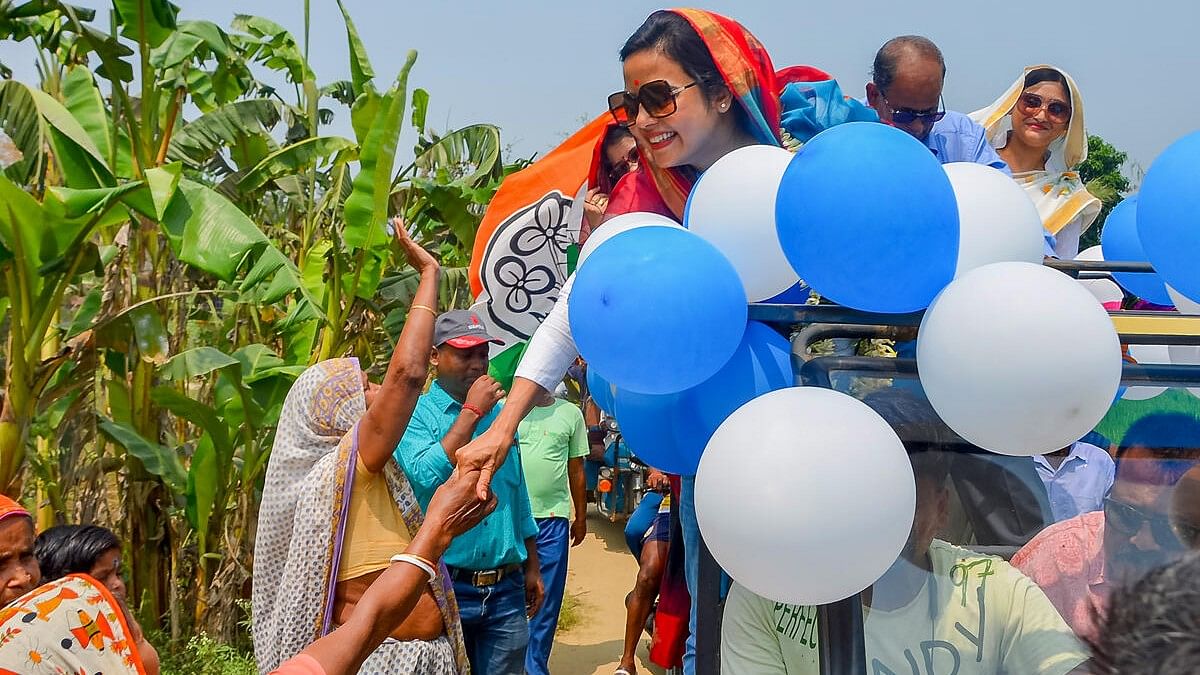
Trinamool Congress candidate for the Lok Sabha polls Mahua Moitra during an election campaign in Kaliganj of Nadia, March 28, 2024.
Credit: PTI Photo
As the general elections unfold, a primary responsibility of the Election Commission (EC) is to oversee poll expenditure by both political parties and individual candidates, employing its own observers and collaborating with state and Central enforcement agencies.
While there's no ceiling on party spending, candidates are restricted to Rs 95 lakh for Lok Sabha constituencies and Rs 40 lakh for Assembly seats, with lower caps in certain smaller states and Union Territories.
The expenditure limit describes the legally permissible amount for election campaigning activities, including public gatherings, advertisements, and transportation.
The spending limit set by the EC is subject to frequent revisions, mainly influenced by cost considerations and the growing voter population.
Here, we take a look at various revisions in spending caps since first elections based on expenditure report by Indian Express.
Timeline of Lok Sabha Spending Caps:
1951-52: In the first general election, Lok Sabha candidates were allowed to spend a maximum of Rs 25,000, with Rs 10,000 limit in some Northeastern states.
1971: Spending cap raised to Rs 35,000 for most states.
1980: Cap increased to Rs 1 lakh per candidate.
1984: Raised to Rs 1.5 lakh in some states and Rs 1.3 lakh in smaller states. States with one to two seats capped at Rs 1 lakh, while UTs like Chandigarh restricted to Rs 50,000.
1996: Post-liberalisation election saw limit raised three-fold to Rs 4.5 lakh for most states, with variations based on UT status and seat count.
1998: Spending cap raised to Rs 15 lakh.
2004: Increased to Rs 25 lakh.
2014: More than doubled to Rs 70 lakh.
2022: After the 2019 polls, the spending cap was raised to the current figures.
District-Level Spending:
At the district level, state Election Commissions (ECs) release rate lists encompassing various items for election expenditure, such as accommodations, transportation, hoardings, tents, garlands, flags, and rally provisions. Rates vary based on item size and material. Officials even provide detailed rate lists for food.
Party Spending:
Parties are increasingly allocating funds to their candidates. In 2019, out of the total Rs 2,994 crore officially spent by 32 national and state parties during the polls, Rs 529 crore was disbursed to candidates as a lump sum, the IE report states.
In 2014, an analysis by the Association for Democratic Reforms revealed that 342 winning candidates from five national parties collectively received Rs 75.6 crore, as per MPs' declarations. In 2009, 388 MPs from six national parties reported a total receipt of Rs 14.2 crore.
Political parties must submit detailed election expenditure reports to the EC within 90 days of Lok Sabha elections' conclusion, while candidates are required to submit expenditure statements to the EC within 30 days post-election.